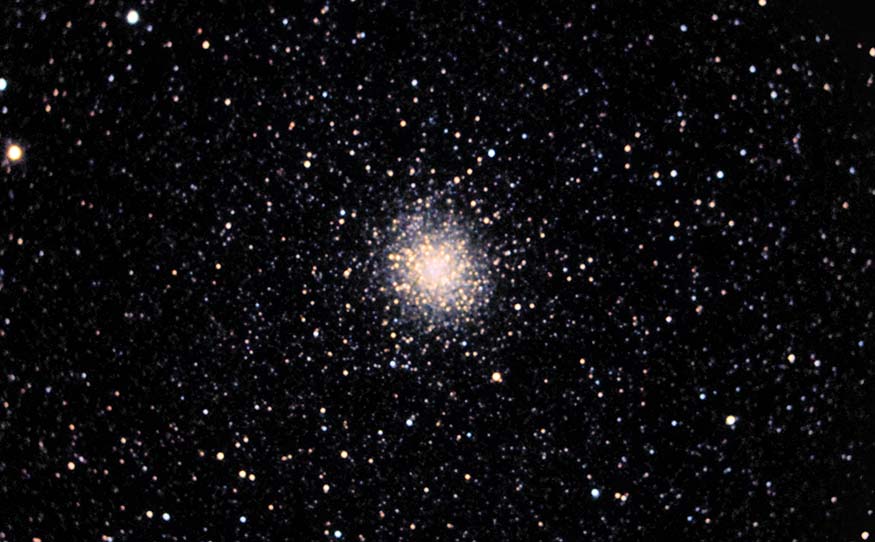
BEAUTY: 
BRAGGING RIGHTS: A beautiful sight
HOW EASY IS IT TO SEE? Best with binoculars or small telescope
Best time to see it: Summer (in Sagittarius)
TYPE: Globular Cluster
DISCOVERED: Before 1665 by Johannes Hevelius
Our galaxy is a flat disk of stars and dust, rotating around a spherical core. When we look up at the Milky Way in the sky, we see a band of light because we are looking at the disk edge-on. Almost all deep space objects that we see are part of the disk of the Milky Way or entirely separate galaxies millions of light-years away.
Almost, but not all. Globular clusters, like Messier 22, are an exception. Instead of orbiting along the flat disk like everyone else, globular clusters buzz around the galaxy’s core like bees, orbiting in a spherical cloud often known as the galactic halo.
Globular clusters are some of the oldest features of the galaxy. They are filled with old stars and lack the clouds of primordial gas that give birth to new ones. Eventually, the stars in Messier 22 will all die. Or perhaps M22 will someday be ripped apart as it passes through the dense disk of the Milky Way.
Either way, when you look up at Messier 22, consider that it was there long before the Earth formed, and that it will still be up there, in the galactic halo, long after our own sun dies.
Look toward the teapot. M22 is another showpiece object around Sagittarius. You can find it a few degrees to the left and north of the very top of the teapot. When you sweep the area with binoculars you are bound to see this compact, fuzzy globe.
It’s full of stars. When it was discovered, telescopes weren’t good enough to reveal more than a patchy cloud. Today, even a small telescope will show some of the thousands of stars that make up this jewel. Try medium and high magnification to get a better view.
SAGITTARIUS REGION IN SUMMER; 30-DEGREE FIELD OF VIEW